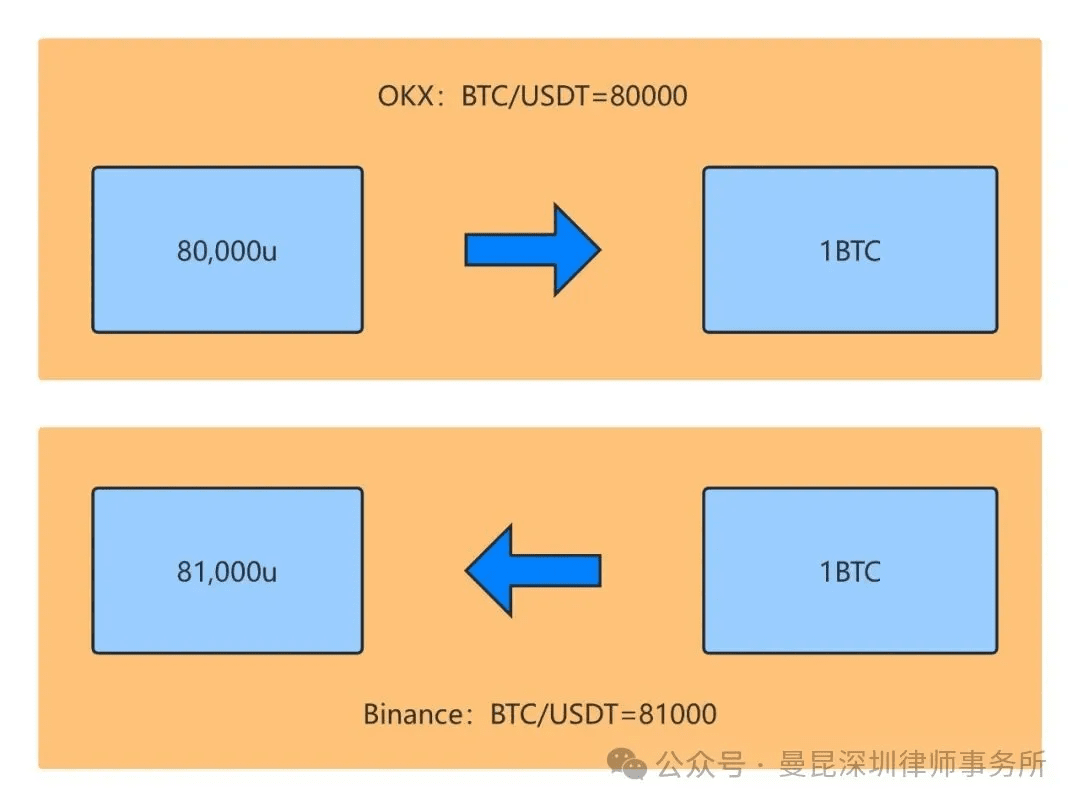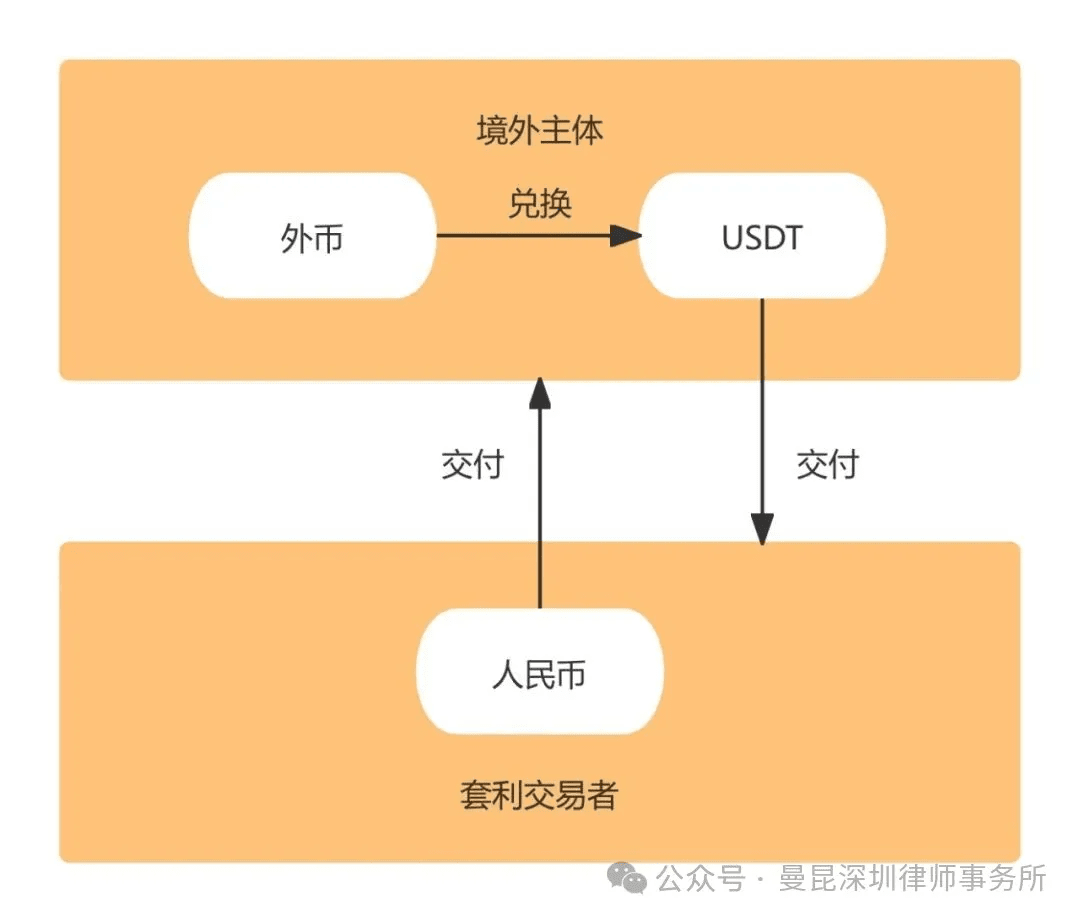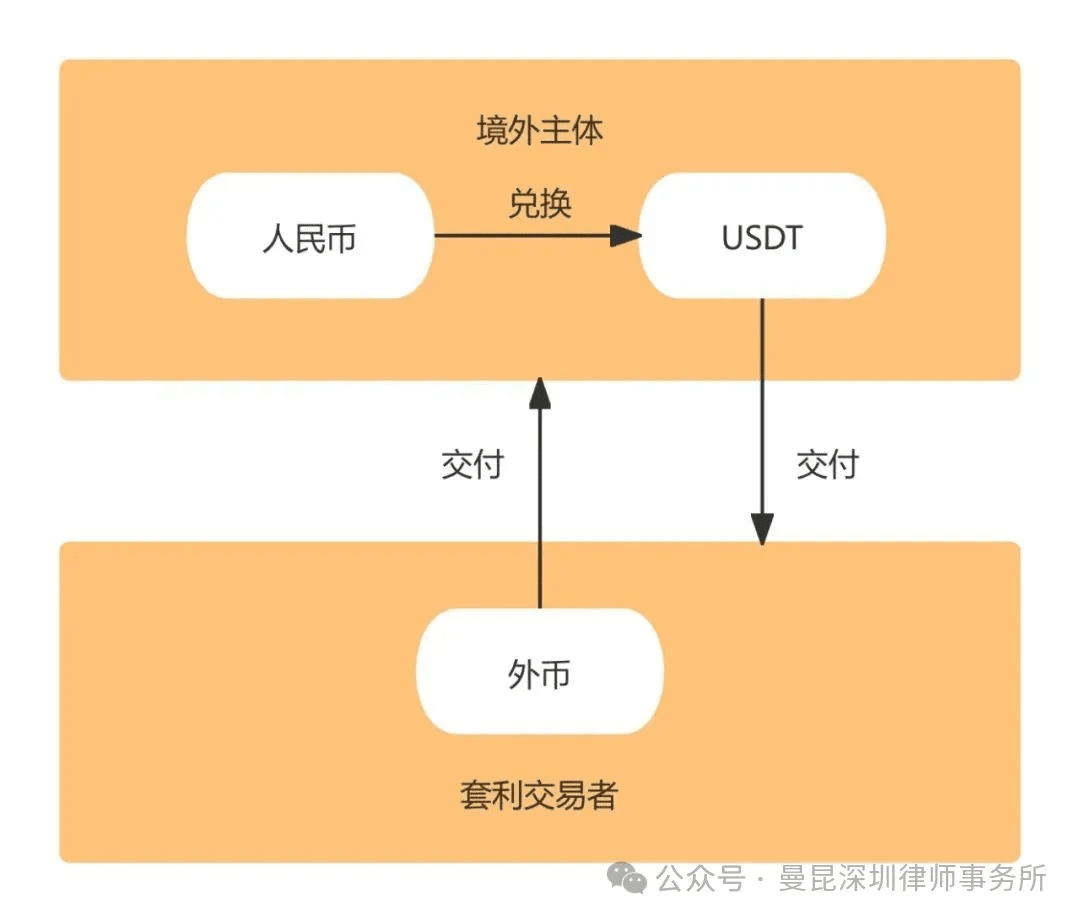Authors: Rao Weitong, Hu Yiming
Original link: https://mp.weixin.qq.com/s/19RQPyktjGbLsW1q7zDhEA
Statement: This article is a reprint. Readers can obtain more information through the original link. If the author has any objections to the form of reprinting, please contact us, and we will make changes according to the author's request. Reprinting is for information sharing only and does not constitute any investment advice, nor does it represent the views and positions of Wu Shuo.
What is "arbitrage trading" and "foreign exchange matching"? Digital currency arbitrage trading refers to the strategy of buying high and selling low based on price differences between different exchanges or trading pairs. The core lies in completing the buying and selling of the same asset within a very short time, achieving risk-free or low-risk returns through quick trades. For example: an arbitrage trader discovers that there are frequent arbitrage opportunities between the BTC/USDT trading pairs on OKX and Binance, so they deposit USDT on OKX while depositing BTC on Binance. When an arbitrage opportunity arises, they simultaneously exchange USDT for BTC on OKX and exchange BTC for USDT on Binance to complete the arbitrage. The above is the simplest description of arbitrage trading. However, in practice, to extract profits, the trading chain required by traders can be much more complex. It is very likely that one of the chains will be exchanged for fiat currency, which can lead to potential "foreign exchange matching" behavior. Typical analysis of illegal foreign exchange arbitrage models (1) Receiving U and delivering fiat currency type: Knowing that the digital currency used for trading by the other party, such as USDT, is purchased with foreign currency, while still providing RMB for exchange, or knowing that the digital currency used for trading by the other party, such as USDT, is purchased with RMB, while believing that they provide foreign currency for exchange, constitutes the receiving U and delivering fiat currency type of illegal foreign exchange arbitrage.
The above is the simplest description of arbitrage trading. However, in practice, to extract profits, the trading chain required by traders can be much more complex. It is very likely that one of the chains will be exchanged for fiat currency, which can lead to potential "foreign exchange matching" behavior. Typical analysis of illegal foreign exchange arbitrage models (1) Receiving U and delivering fiat currency type: Knowing that the digital currency used for trading by the other party, such as USDT, is purchased with foreign currency, while still providing RMB for exchange, or knowing that the digital currency used for trading by the other party, such as USDT, is purchased with RMB, while believing that they provide foreign currency for exchange, constitutes the receiving U and delivering fiat currency type of illegal foreign exchange arbitrage.
 (2) Matching transaction type: Collecting RMB domestically, transferring foreign currency from overseas accounts to the designated account of the currency purchaser, and purchasing USDT or other digital currencies with the collected RMB and exchanging them for overseas fiat currency; or collecting foreign currency in overseas accounts, transferring RMB to the designated account of the currency purchaser, and purchasing USDT or other digital currencies with the collected foreign currency and exchanging them back to RMB constitutes the matching transaction type of illegal foreign exchange arbitrage. (3) The core difference between ordinary arbitrage trading and illegal foreign exchange matching: The most core difference between arbitrage trading and foreign exchange matching lies in whether the trading chain simultaneously involves RMB and foreign currency. Distinguishing between ordinary arbitrage trading and illegal foreign exchange matching is not difficult: Confirm whether the trading target is a virtual currency trading pair that is normally listed on the exchange. If both trading targets involved in the two-way matching are virtual currencies, it generally will not involve illegal foreign exchange matching. Secondly, if it involves deposits and withdrawals, it must be judged whether the source of the digital currency is purchased with foreign currency. If the digital currency purchased with RMB also comes from RMB, it generally does not involve illegal foreign exchange matching.
(2) Matching transaction type: Collecting RMB domestically, transferring foreign currency from overseas accounts to the designated account of the currency purchaser, and purchasing USDT or other digital currencies with the collected RMB and exchanging them for overseas fiat currency; or collecting foreign currency in overseas accounts, transferring RMB to the designated account of the currency purchaser, and purchasing USDT or other digital currencies with the collected foreign currency and exchanging them back to RMB constitutes the matching transaction type of illegal foreign exchange arbitrage. (3) The core difference between ordinary arbitrage trading and illegal foreign exchange matching: The most core difference between arbitrage trading and foreign exchange matching lies in whether the trading chain simultaneously involves RMB and foreign currency. Distinguishing between ordinary arbitrage trading and illegal foreign exchange matching is not difficult: Confirm whether the trading target is a virtual currency trading pair that is normally listed on the exchange. If both trading targets involved in the two-way matching are virtual currencies, it generally will not involve illegal foreign exchange matching. Secondly, if it involves deposits and withdrawals, it must be judged whether the source of the digital currency is purchased with foreign currency. If the digital currency purchased with RMB also comes from RMB, it generally does not involve illegal foreign exchange matching.


